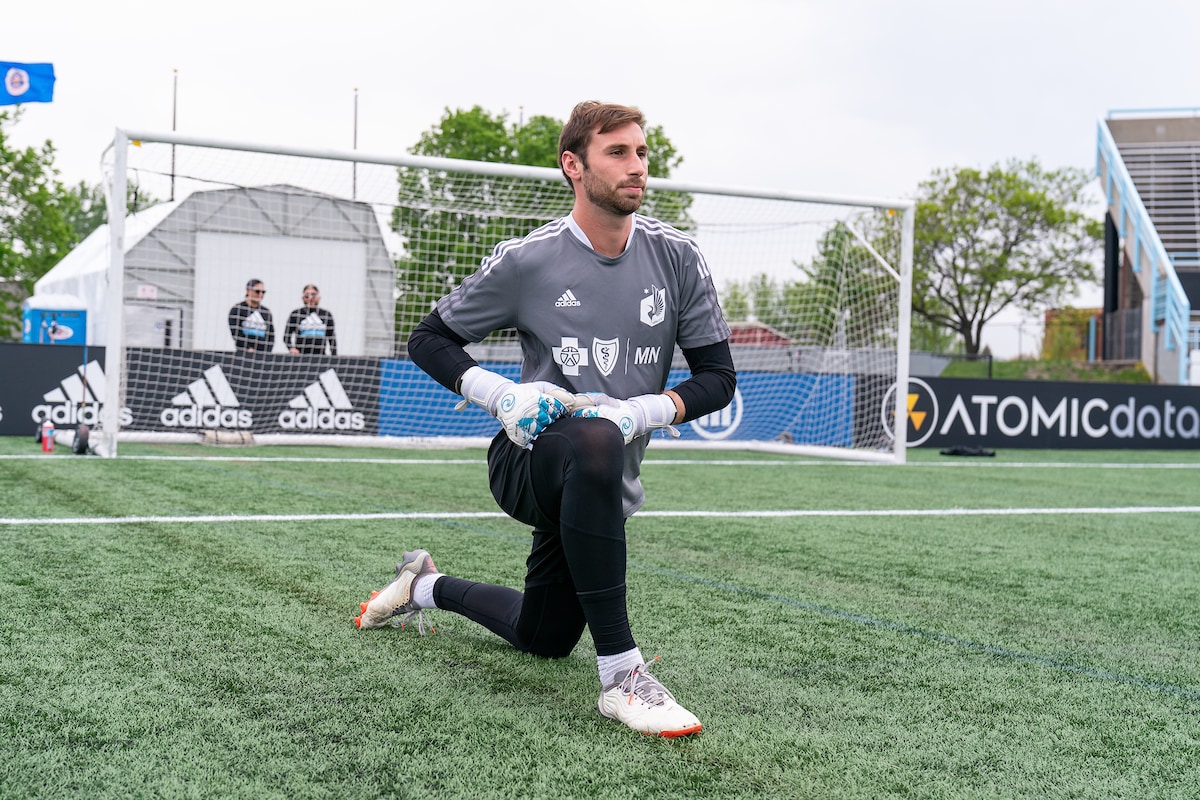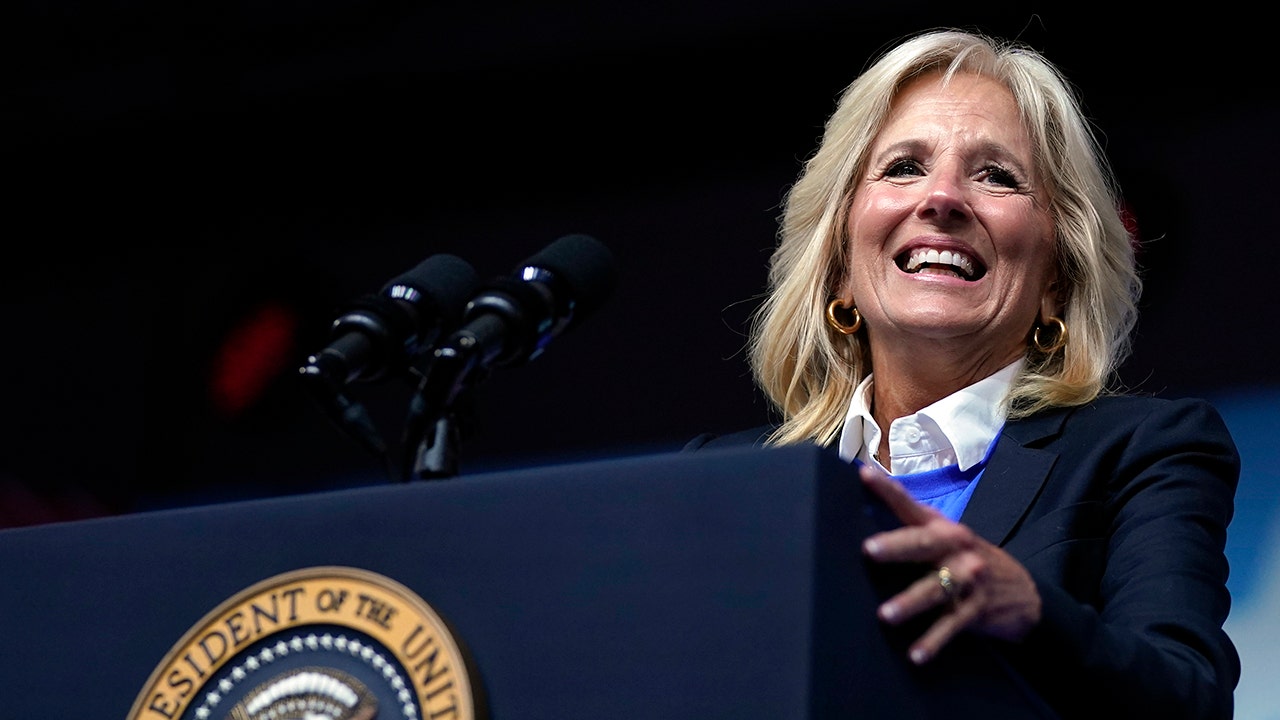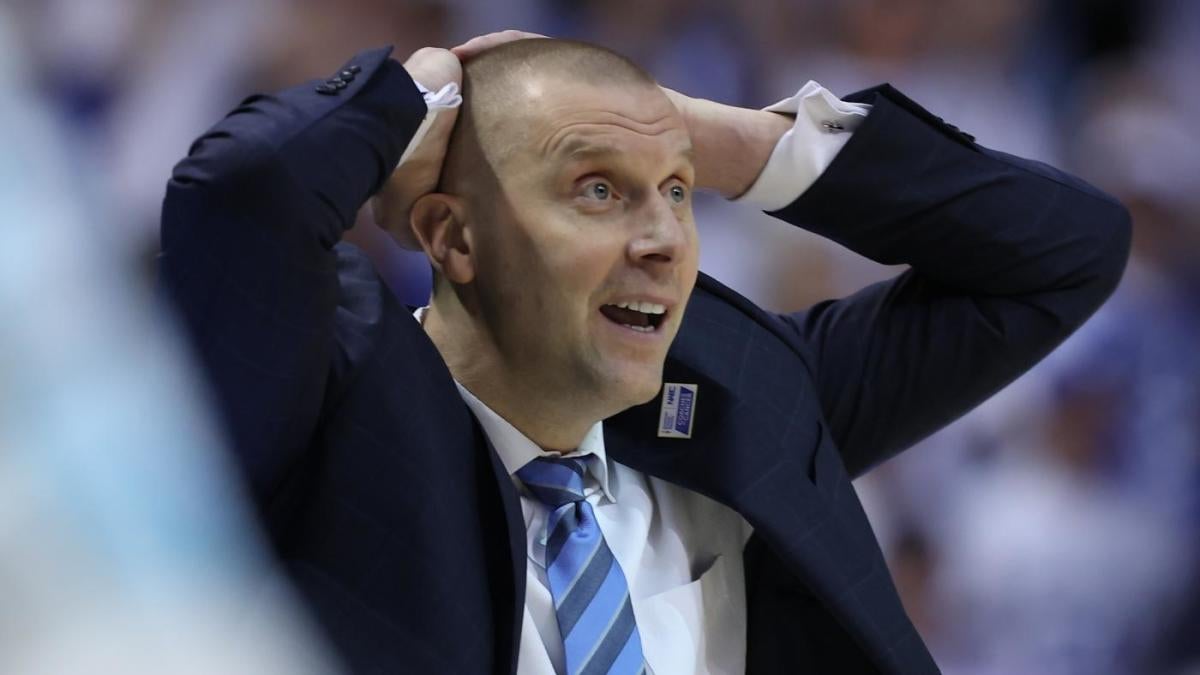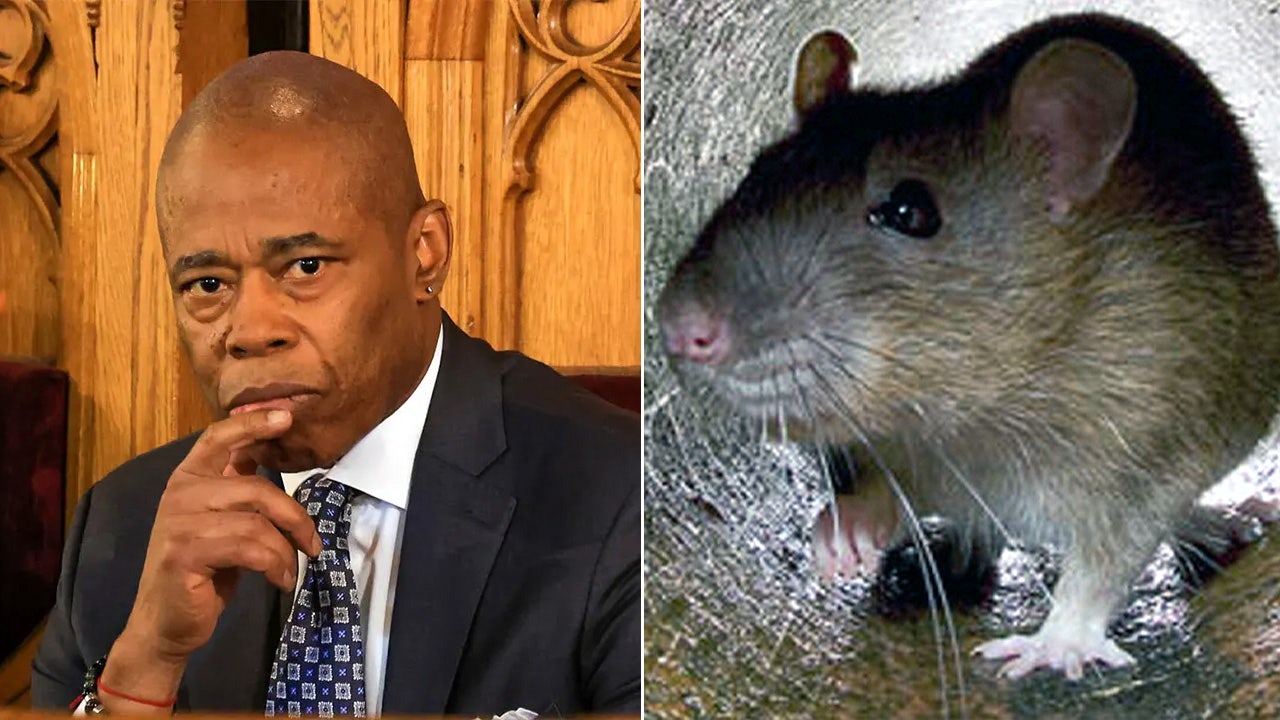Minnesota
Minnesota United Signs Goalkeeper Alec Smir to Second Short-Term Agreement | Minnesota United FC

Minnesota United announced today the club has signed MNUFC2 goalkeeper Alec Smir (pronounced smurr) to a Short-Term Agreement, making him available for Saturday’s MLS away contest against Atlanta United FC at 6:30 p.m. CT. This is Smir’s second Short-Term Agreement of the season, and is the last time he can be called into the first team for an MLS contest in 2024. Smir still has two Short-Term Agreements available for non-MLS competitions.
Smir has been with MNUFC2 since 2022, the season that the team was founded and began play in MLS NEXT Pro. Since 2022, the goalkeeper has made 22 game appearances (15 starts in net) in regular-season action. This season, Smir made the start and earned a clean sheet following the 3-0 U.S. Open Cup First Round victory at Chicago House A.C. in March. He was on his first Short-Term Agreement last week, making him available on the bench during the Loons’ 2-1 victory at home over Sporting Kansas City on April 27.
The North Carolina native notably was selected to participate in the 2022 MLS All-Star Skills Challenge in the return of “Goalie Wars”, defeating three other MLS NEXT Pro goalkeepers to win the surprise event at Allianz Field in Saint Paul, Minnesota.
TRANSACTION: Minnesota United signs MNUFC2 goalkeeper Alec Smir to a Short-Term Agreement. This is Smir’s second Short-Term Agreement of the season, and is the last time he can be called into the first team for an MLS contest in 2024. Smir still has two Short-Term Agreements available for non-MLS competitions.
Alec Smir
Pronunciation: smurr
Position: Goalkeeper
Date of birth: 4/13/1999 (25 years old)
Height: 6’2”
Weight: 183 lbs.
Birthplace: San Antonio, Texas
Hometown: Greensboro, North Carolina

Minnesota
10-Year Enrollment Changes At All Minnesota State Universities

UNDATED (WJON News) — The individual currently in charge of operations at St. Cloud State University is departing the institution to pursue another job.
Acting President Larry Lee revealed this week that he has agreed to serve as president at Blackburn College in Illinois. Lee said he will stay with St. Cloud State until mid-July to assist with the upcoming leadership transition.
Larry Dietz will assume the role of interim president at the university starting on July 1st.
Dietz, and whoever is named to fill the position on a more permanent basis, will be asked to turn around years of declining enrollment and budget deficits which have resulted in cuts to staff, programs, and sports.
Former President Robbyn Wacker announced back in November that she was leaving the university.
Here’s a breakdown of how St. Cloud State University’s 10-year enrollment decline compares to each of the other universities in the Minnesota State system.
ST. CLOUD STATE UNIVERSITY
In fiscal year 2014 SCSU had 19,623 students compared to 12,713 students in fiscal year 2023. That’s a decline in students of 6,910 or a 35 percent reduction. It has had the biggest percent decline of all the universities.
WINONA STATE UNIVERSITY
In fiscal year 2014 Winona State had 9,848 students compared to 7,030 students in fiscal year 2023. That’s a decline in students of 2,818 or a 28 percent reduction.
METROPOLITAN STATE UNIVERSITY
In fiscal year 2014 Metropolitan State had 11,497 students compared to 8,510 students in fiscal year 2023. That’s a decline in students of 2,969 or a 25 percent reduction.
MOORHEAD STATE UNIVERSITY
In fiscal year 2014 Moorhead State had 7,820 students compared to 6,072 students in fiscal year 2023. That’s a decline in students of 1,748 or a 22 percent reduction.
BEMIDJI STATE UNIVERSITY
In fiscal year 2014 Bemidji State had 6,170 students compared to 5,062 students in fiscal year 2023. That’s a decline of 1,108 students or a 17 percent reduction.
MANKATO STATE UNIVERSITY
In fiscal year 2014 Mankato State had 18,229 students compared to 18,040 students in fiscal year 2023. That’s a decline of 189 students or less than one percent.
SOUTHWEST MINNESOTA STATE UNIVERSITY
In fiscal year 2014 SW MN State had 8,192 students compared to 8,521 students in fiscal year 2023. This is the only four-year university in the system that actually saw an increase in enrollment.
The total enrollment of all the universities combined went from 81,379 students in fiscal year 2014 to 65,948 students in fiscal year 2023. That’s a decline of 15,431 students or an 18 percent reduction.
A report completed in 2022 by Minnesota State Universities said St. Cloud State University generates nearly $600 million in economic impact annually. SCSU also supports and sustains over 4,300 jobs in the early. The combined tax impact of SCSU, its suppliers, students and visitors is nearly $43 million.
READ RELATED ARTICLES
Come Visit Lake Henry, Minnesota in Pictures
Minnesota
Duluth projects won’t get state funding after ‘chaos’ at Minnesota legislature

DULUTH, Minn. (Northern News Now) – A bonding bill that would have funded multiple projects in Duluth failed to make it out of the capitol.
Infrastructure projects across Minnesota won’t receive needed funding after a chaotic end to the Minnesota legislative session.
Senator Grant Hauschild (D-Hermantown) said that disorder caused multiple items to fall by the wayside, including a bonding bill.
“We had full DFL support for a bonding bill this year, but unfortunately we couldn’t get the republican votes we needed to get that super majority,” Hauschild said.
In Duluth alone, updates to the water treatment plant, the lift bridge and seawalls will not get requested funding. It is an issue projects across the state now face.
House Minority Leader Lisa Demuth (R-Cold Spring) said the fact they could not push funding through is evidence of a larger issue.
“Minnesota has a spending problem, not a revenue problem and that’s something to keep in mind,” Demuth said.
Projects like the lift bridge likely will not see funding until next session, which begins January 2025. For that to happen any sooner, Governor Walz would need to call a special session.
A special session is something Senate Assistant Majority Leader Nick Frent would support.
“I know some legislators, including me that are optimistic soon we can have discussions about a special session,” he said.
Click here to download the Northern News Now app or our Northern News Now First Alert weather app.
Copyright 2024 Northern News Now. All rights reserved.
Minnesota
A look at the uncertain future of homeowners insurance in Minnesota

MINNEAPOLIS — Tuesday’s severe weather left damage across Iowa and southern Minnesota. Each time we get weather like this, the damage adds up and so do the insurance costs.
Minnesota insurance companies have lost money six out of the last seven years. The main culprit: hail.
Last August’s hail storm here caused $1 billion in damages. With mounting losses for insurance companies, there is an increasing risk of insurers deciding to pull out of our region.
“The effects of climate change are really having their most direct and financial impact to people as it relates to insurance,” said Aaron Cocking, the president of the Insurance Federation of Minnesota.
Homeowners insurance rates have soared. In Iowa, insurers are not renewing policies leaving homeowners like Dave Langston of Cedar Rapids searching for new coverage.
“We got a notification in January of this year, that Pekin insurance, who was our insurer, was going to withdraw from the Iowa market,” said Langston.
He finally found new insurance but it came with a steep price. The association’s previous insurance was $18,500 while the new insurance is now $26,500, an increase of 43%.
Langston warned Minnesotans this could happen here.
“I think that everybody needs to be aware that that the Midwest is coming under scrutiny as a potentially poor investment for insurance companies,” said Langston.
Minnesota has joined high risk states, like Florida, in creating a state-backed high-risk insurance product called FAIR — an insurance of last resort.
“We’ve had our FAIR plan in place for quite some time. Some states didn’t have that,” said Grace Arnold, the Commerce Department’s commissioner.
WCCO’s Director of Meteorology Mike Augustyniak believes warming global temperatures are a factor.
“We know from eighth grade science that the more you warm an air mass the more moisture it can hold. We are increasing the amount of moisture that is in the air. The question of other factors that form severe weather, how are they changing? That’s the piece where we are not sure,” said Augustyniak.
Talking Points airs every Wednesday and Thursday at 6:30 p.m. and 9:30 p.m., live on CBS News Minnesota.
NOTE: Above is a preview of Talking Points presented on “The 4.”
-

 World1 week ago
World1 week agoPro-Palestinian university students in the Netherlands uphold protest
-

 Politics1 week ago
Politics1 week agoReports of Biden White House keeping 'sensitive' Hamas intel from Israel draws outrage
-

 Politics1 week ago
Politics1 week agoSouthern border migrant encounters decrease slightly but gotaways still surge under Biden
-

 Politics1 week ago
Politics1 week agoWhite House walks diplomatic tightrope on Israel amid contradictory messaging: 'You can't have it both ways'
-

 World1 week ago
World1 week agoSlovakia PM Robert Fico in ‘very serious’ condition after being shot
-

 Politics1 week ago
Politics1 week agoDem newcomer aims for history with primary win over wealthy controversial congressman
-

 Politics1 week ago
Politics1 week agoJill Biden tells Arizona college graduates 'community colleges should be free in America'
-

 News1 week ago
News1 week agoDespite state bans, abortions nationwide are up, driven by telehealth





















